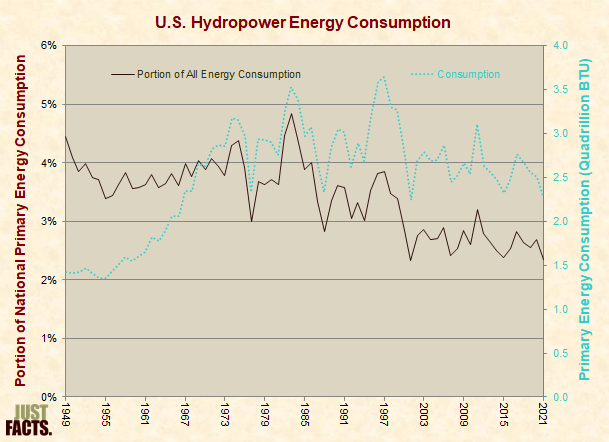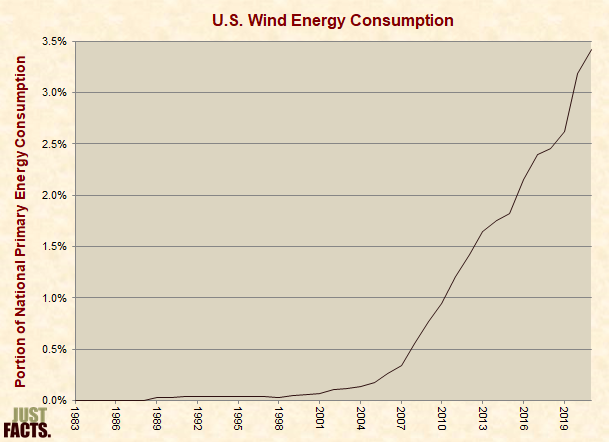* Hydroelectric power can also be produced without dams by “run-of-the-river” generators, which temporarily divert a portion of the river through canals or pipes that flow through turbines.[782]
* A 2006 analysis by Idaho National Laboratory estimated that U.S. rivers and streams have an average hydropower potential of 297,436 megawatts. The analysis also estimated that:
- 8% of this total potential is being harnessed.
- 33% of this total potential cannot be developed because of environmental and land use restrictions, lack of accessibility, or because it is located large distances from electrical power grids.
- 33% of this total potential could feasibly be developed.
- 8% of this total potential could be harnessed without using dams.
- 4% of this total potential could be harnessed without using dams and without using sites that have low-power potential, which makes them economically unattractive.[783] [784]
* Power capacity (a commonly cited statistic for wind energy installations[800]) is the amount of electricity that wind turbines produce when operating at full capacity, which occurs when wind conditions are optimal. It is not a measure of actual production.[801] [802] In the U.S. during 2004–2014, actual production from wind turbines was 29% of their power capacity.[803]
* With the exception of pumped hydropower, current technology cannot economically store large quantities of electricity. Thus, utilities must produce enough electricity to meet their customers’ demands on a second-by-second basis.[804] [805] [806] [807] [808] [809] [810]
* Because wind power is intermittent and utility-scale electricity cannot be easily stored, most wind power capacity must be backed-up by other energy sources that can generate electricity on demand, such as natural gas power plants.[811] [812] [813] [814] [815] [816] Per EIA:
Often, wind generation does not coincide with the demand for electric power; wind resources are generally more prevalent overnight, when demand for electric power is at a minimum. In most areas, summer peak demand for electricity coincides with hot afternoons when consumers have turned up their air conditioners – but in many areas, such times are calm and wind resources may be quite low.[817] [818]
* As the amount of wind capacity rises in a given region, so do the challenges and costs of backing up its intermittent energy output.[819] [820] [821] [822]











